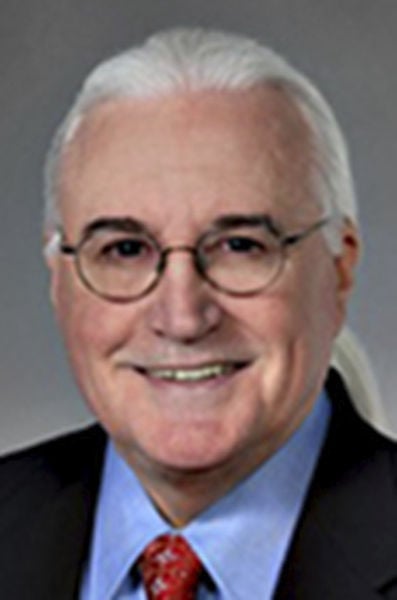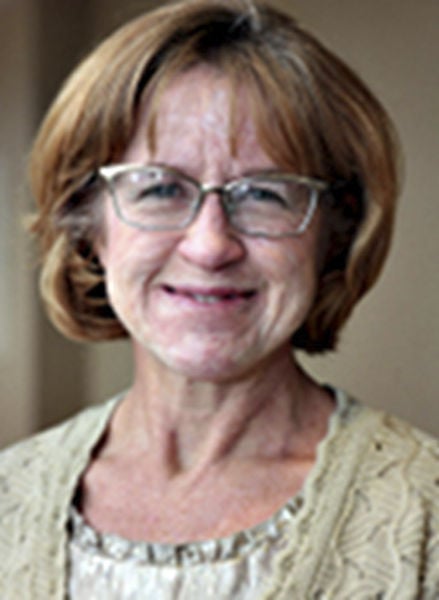I have put my hat into the ring partly because of Common Core. I despise Common core. I figured out recently that the supposed dropping of the Common Core standards is an illusion. The school system merely wants to selectively rewrite (code: reword) the same standards. This cannot be!!!! Please help me fight this with your vote for Board of Education in May.
EDITOR'S PICK
No common ground on Common Core
0
CHARLESTON — When the issue of Common Core education standards is discussed at the State Capitol, there's no common ground for opponents and proponents to work from and compromise. It's all or nothing, and that causes turbulence for everyone.
Some lawmakers, who want to rewrite the standards, say they are responding to voters' concerns about what is taught in elementary and secondary classrooms and what is measured, about the loss of local control and excessive testing.
Educators are feeling whipsawed by shifting standards, having to adjust lessons plans on an annual basis and the resulting lack of continuity and certainty in classroom instruction. They believe politics is getting in the way of a professional approach to devising instruction. They worry about what changes are ahead and the time it will take to implement them efficiently and effectively.
At issue is HB4014, under consideration in the current legislative season, which would prohibit the state board of education from using any Common Core standards in favor of developing the state's own standards.
The repeal of Common Core in West Virginia has been an issue for two legislative sessions, ever since Republicans won the majority. Common Core, adopted in 2010, was an initiative developed by the National Governors Association to create nationwide standards to serve students in a transient society and to raise student achievement across the country. Students could move from one state to another, the thinking goes, but would have the same educational standards from one state to the next.
The standards are criticized by many lawmakers, parents and teachers as federal overreach, a violation of the 10th Amendment and just plain "wrong for West Virginia."
Angela Summers, a prominent member of West Virginia Against Common Core, is blunt in her assessment.
"Common Core is not just about educational standards, it's about who is controlling education, it's about corporate greed at the expense of our children, it's about ignoring the 10th Amendment," Summers said at a public hearing on Common Core in the House Chamber Thursday. "We have sold our state sovereignty for a federal dollar and this must end."
That would bring about the third change in standards in the last six years. The challenge then would be to identify standards that align with "West Virginia values," then finding tests aligned with those standards.
"Standards are meant to last the test of time," countered State Superintendent of Schools Dr. Michael Martirano at the public hearing. "We have strong standards. They are research-based. We have listened, we have learned, we have responded."
After last year's Common Core repeal bill was amended to be a study, the bill died on the last night of the legislative session. Afterwards, Martirano conducted a study using Dr. Gypsy Denzine, dean of the College of Educational Services at West Virginia University and an education researcher, to analyze answers from an online survey and town hall meetings in different regions of the state.
As a result, Martirano recommended to the state board of education that they repeal Common Core and adopt West Virginia College and Career Ready standards. Critics say the new standards closely mirror Common Core, but add multiplication tables and cursive writing instruction.
The study recommended the state board provide more local control of curriculum and instructional material choice.
"Teachers know what works best in the classroom and need to devise their own lesson plans and curriculum in order to tailor instruction to individual needs," the study said. "Teachers need the ability and flexibility to select high quality instructional materials that meet the needs of their students."
Changes in standards doesn't just affect public education
For American Federation of Teachers West Virginia president Christine Campbell, changing the name of the standards may satisfy those who are not in education, but may do very little to change the standards themselves.
"What standards are going to be different?" Campbell asked. "Standards are based on brain development, what (students) are capable of doing, and setting standards high enough to push them to another grade level. If you change the standards, you would have to change instructional development again."
That also means changing the way state colleges and universities train their teachers.
Dr. Corley Dennison, the Higher Education Policy Commission's vice chancellor for academic affairs, said "the upheaval in standards has placed a burden" on colleges and universities because "it also changes teacher standards."
Dennison said the state has not had time to determine yet if the standards now in place are successful or not.
New standards, higher expectations
Joanna Burt-Kinderman is the district math instructional coach for grades 6-12 in Pocahontas County, where teachers were given authority to shape teaching methods and materials six years ago. Burt-Kinderman coaches math teachers in their classrooms, meets with teachers as groups and looks at test scores to see where instruction needs more emphasis.
For Burt-Kinderman, Common Core is working, even after getting off to a rough start in Pocahontas County where most students live just under the median poverty level and 61 percent of students get free or reduced lunches.
"You'd expect us to be near the bottom of the barrel because of the problems our county faces," she said. "But last year our test scores ... "
Burt-Kinderman's words began to rush as her excitement over a rural county's math scores overcame her. Pocahontas County's overall math scores for grades 3-12 were fourth overall in the state, and in the top 10 for grades 6-12. But her real excitement was for eighth and 11th grades, where Pocahontas County school children were ranked first with 44.12 percent and 35 percent proficiency, respectively.
Those numbers, while below 50 percent proficiency, can't be overlooked because of the change from one test (WESTEST II) to another (Smarter Balance), which has higher standards.
"Because the new content standards set higher expectations for students and the new tests are designed to assess student performance against those higher standards, the bar has been raised," wrote Dr. Joe Willhoft, creator of Smarter Balance.
"It's not surprising that fewer students could score at Level 3 or higher," Wilhoft said. "However, over time the performance of students will improve."
Estimates on student test scores were that 13 percent of eightth-graders and 11 percent of 11th-graders would score between 90 and 100 percent on the Smarter Balance math tests.
According to information Burt-Kinderman provided, "Pocahontas County has the highest percentage of students meeting the math benchmark on Grade 11 College and Career Readiness assessment than any other county in the state. The average percent of students meeting the benchmark is 18 percent. Pocahontas County has nearly double that at 34 percent."
Constant changes may mean reluctance to explore growth opportunities
Burt-Kinderman worries about what happens to student achievement if lawmakers change standards again.
"Legislators think the numbers they got with Smarter Balance aren't valid," she said. "But you can't measure growth because you don't have the latest year's test scores."
And, she said, Smarter Balance can't be compared to WESTEST II by simply saying the scores were lower.
"Well, no, they weren't," Burt-Kinderman said. "It's like comparing a 5k to a marathon; your time is slower on the marathon so you must be more out of shape."
Pocahontas County's growth didn't happen overnight. In fact, it took four years of articulating curriculum plans horizontally across different subjects and vertically from one grade to the next at all grade levels.
"And (they're) not allowing other districts to get started," Burt-Kinderman said. "Nobody is talking about the real danger of not continuing the standards."
That, she says, is that local school administrators will be wary of purchasing new instructional materials and reluctant to send teachers to training.
"It incentivizes districts to just be still," Burt-Kinderman said. "You can't leave education standards in flux from (legislative) session to (legislative) session."
Not enough time to know if Common Core works
Martirano agrees with Burt-Kinderman, saying he needs at least two to three years of test scores to compare student achievement.
"I need to have a comparison of apples to apples," he said. "We had our first round of tests last year and we set our baseline and our test scores exceed the baseline in Grade 3 for English/language arts and math, and all across the board for (English/language arts). In math, not so much, but we're looking for great improvement this year for our second implementation of our tests."
Martirano said this year's test will allow him to have solid comparative data, which will allow him to improve instruction. Online testing allows for faster scoring turnaround, equipping school officials with data in August instead of December. And that is important, Martirano said.
State Board of Education president Mike Green said West Virginia has a system that works and he resents legislative interference in an education system they may not understand.
"Our teachers were intimately involved in developing these standards," Green said. "Education policy must not be about the adults and what they want; it must be about the children and what they need."
Green said elements of the bill "go way too far," including a provision that allows parents to opt out of having their child tested. Federal and state law require 95 percent of students in a district to be tested.
"This bill undermines our duties and responsibilities and will lead to costly disruption and chaos in our education system," he said.
HB4014 is in the House Committee on Education, which has nearly 100 bills pending with a little more than half of the legislative session to go before it ends on March 12.
— Email: ppritt@register-herald.com; follow PamPrittRH on Twitter







No comments:
Post a Comment
We are making comments available again! You are free to express your First Amendment Rights Here!